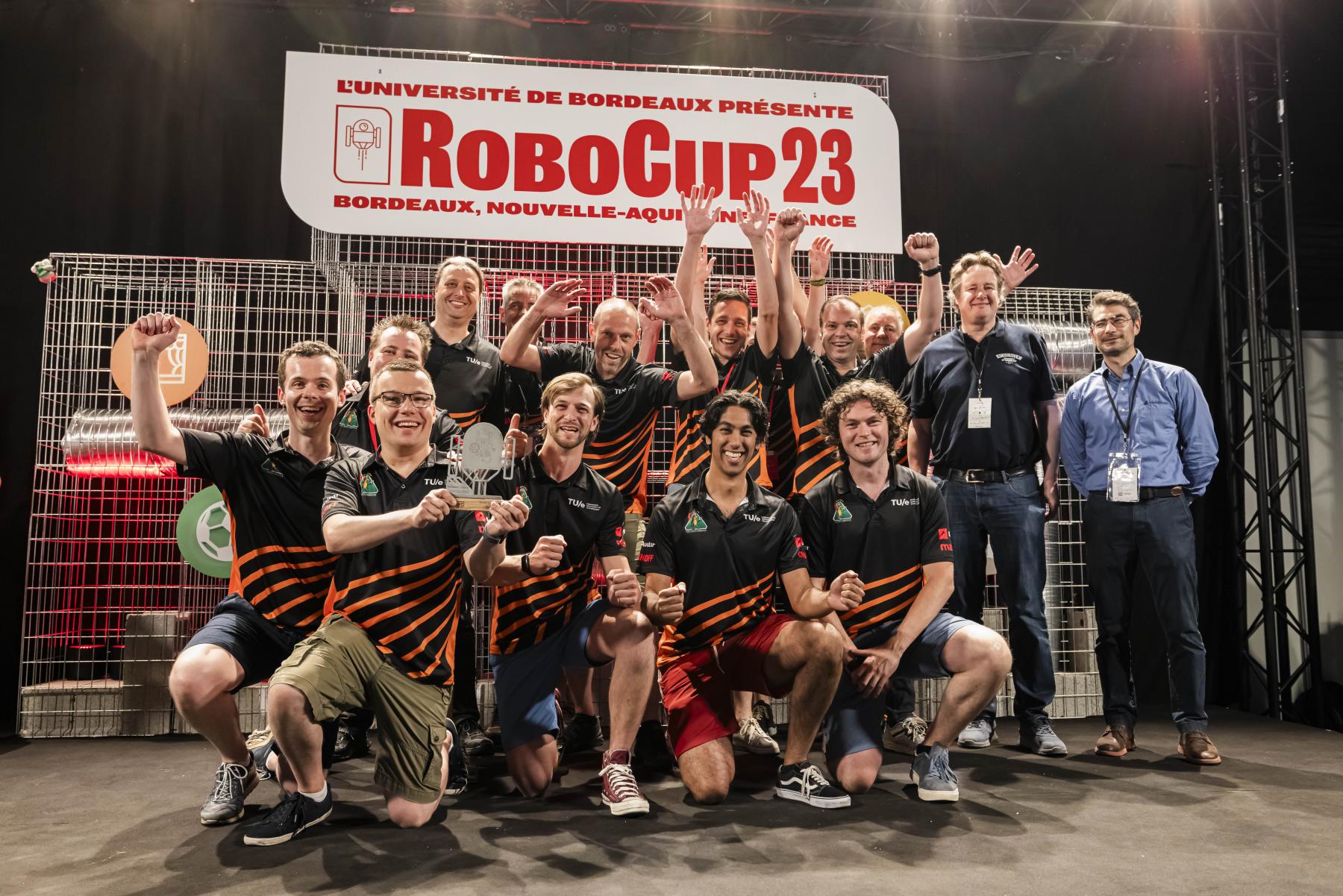 The Tech United team from Eindhoven has done it again: the autonomous EtherCAT-based soccer robots won the world championship for soccer robots, the RoboCup, in the Middle Size League, the most powerful league in robot soccer. At the RoboCup in Bordeaux, France, the team of 5 autonomous robots defeated the Falcons from the neighboring city of Veldhoven with a 6-2 result, making the final a local derby!
The Tech United team from Eindhoven has done it again: the autonomous EtherCAT-based soccer robots won the world championship for soccer robots, the RoboCup, in the Middle Size League, the most powerful league in robot soccer. At the RoboCup in Bordeaux, France, the team of 5 autonomous robots defeated the Falcons from the neighboring city of Veldhoven with a 6-2 result, making the final a local derby!
Tech United is a multidisciplinary team that currently numbers 46 (former) students, PhD students, and employees of the Eindhoven University of Technology, who are all working on robot development. Their expertise, gleaned from the fields of mechanical engineering, electrical engineering, and computer algorithms, is used to solve problems. The RoboCup stadium on the university campus is Tech United’s home base.
Tech United participates in tournaments around the world. The RoboCup is an annual world championship for robots that can communicate and respond to an ever-changing environment. The RoboCup is an open-source competition. After each tournament, all of the knowledge gained is shared among the teams. The rules of the game also change every year to challenge teams to constantly improve and innovate their technologies.
Winner the sixth time
This is the sixth time that the Tech United team has won the RoboCup. This year, the fifth generation of soccer robots, named ‘TURTLE’ (Tech United RoboCup Team: Limited Edition), was competing: this was the first time that no omnidirectional wheels were used. Instead, newly developed drives with swivel axles, which allow the orientation of each wheel to be controlled individually, were implemented. This gives better traction, which significantly improved the acceleration of the robots. Tech United relies on EtherCAT for its communication technology, as they have done since it brought out its first generation in 2005.
The software for controlling the robots consists of four modules: Vision, World Model, Strategy, and Motion. The Vision module processes data from the vision sensors, such as omnivision images, to determine the positions of the ball, opponents, and the robot itself. This position data is fed into the World Model. Here, image data from all team members is combined to create a unified representation of the environment. The Strategy module makes decisions based on this generated world model. Finally, the Motion module translates the Strategy module’s instructions into low-level control commands for the robot’s actuators.